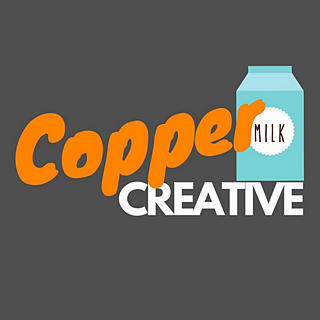3 Tips For Building A Successful Fashion Business
- Copper Milk Creative
- Mar 13, 2023
- 2 min read
3 Tips For Building A Successful Fashion Business

Fashion is a highly competitive industry with constant innovation and creativity. As a fashion entrepreneur, you might have plenty of unique fashion ideas, but transforming those ideas into a successful product can be daunting. With 34,045 businesses operating in the sector, it is understandable how competitive the fashion industry is. Unfortunately, data shows that many fashion startups fail to make it past the fifth year. Still, you can turn your fashion ideas into a successful business with the right strategy and approach. Here are three steps to help you do this.
Find creative ways to market your products
A crucial step in the process is nailing your marketing and sales. This helps to create brand awareness, generate demand, and attract customers. You can use different marketing channels, like social media, email marketing, influencer marketing, and advertising, to promote your fashion product. Regarding sales, you can choose between different distribution channels, such as e-commerce, brick-and-mortar stores, or wholesale. However, your target audience's buying behaviour and preferences will determine the most suitable distribution channel. You can also offer promotions, discounts, or limited editions to motivate customers to buy your fashion product.
Production and manufacturing
Once you have finalised the prototype and are sure you're ready to start, you can move on to production and manufacturing. The production process involves creating your product in large quantities. Depending on your budget and resources, you can choose between in-house or outsourced production. In-house production refers to creating your product on-site, while outsourced production involves partnering with an external manufacturer or factory for the same purpose. However, ensure the manufacturer meets your quality and quantity requirements before selecting one. More importantly, they must be reliable and trustworthy. At this stage, also consider the environmental impact of your product. The fashion industry accounts for 10% of global carbon emissions and is responsible for water pollution and waste. Therefore, you can make a difference using sustainable materials, adopting eco-friendly production methods, and reducing waste.
Research and plan
Research involves identifying the market, and understanding preferences, needs, and buying behaviours. You can also study your competitors to identify gaps in the market and opportunities to differentiate your product. The information you gather will help you create a plan that outlines your product's unique selling proposition, target market, production process, pricing, and marketing strategy. Moving on to the next step won't be easy without a plan. The planning stage will also require creating a prototype. It is a preliminary model of your product that allows you to test and refine the design and functionality. For example, if you want to venture into sports apparel, a rugby team kit designed online can be a good prototype. There’s a variety of different methods you can utilise such as sketching, 3D printing, or sample-making. Ensure your prototype aligns with your plan and the audience's needs and preferences.
The UK fashion industry is worth billions of pounds, so you can be assured that it is a lucrative business. However, it's not a walk in the park, meaning you must work hard to get your slice of the cake.





































Comments